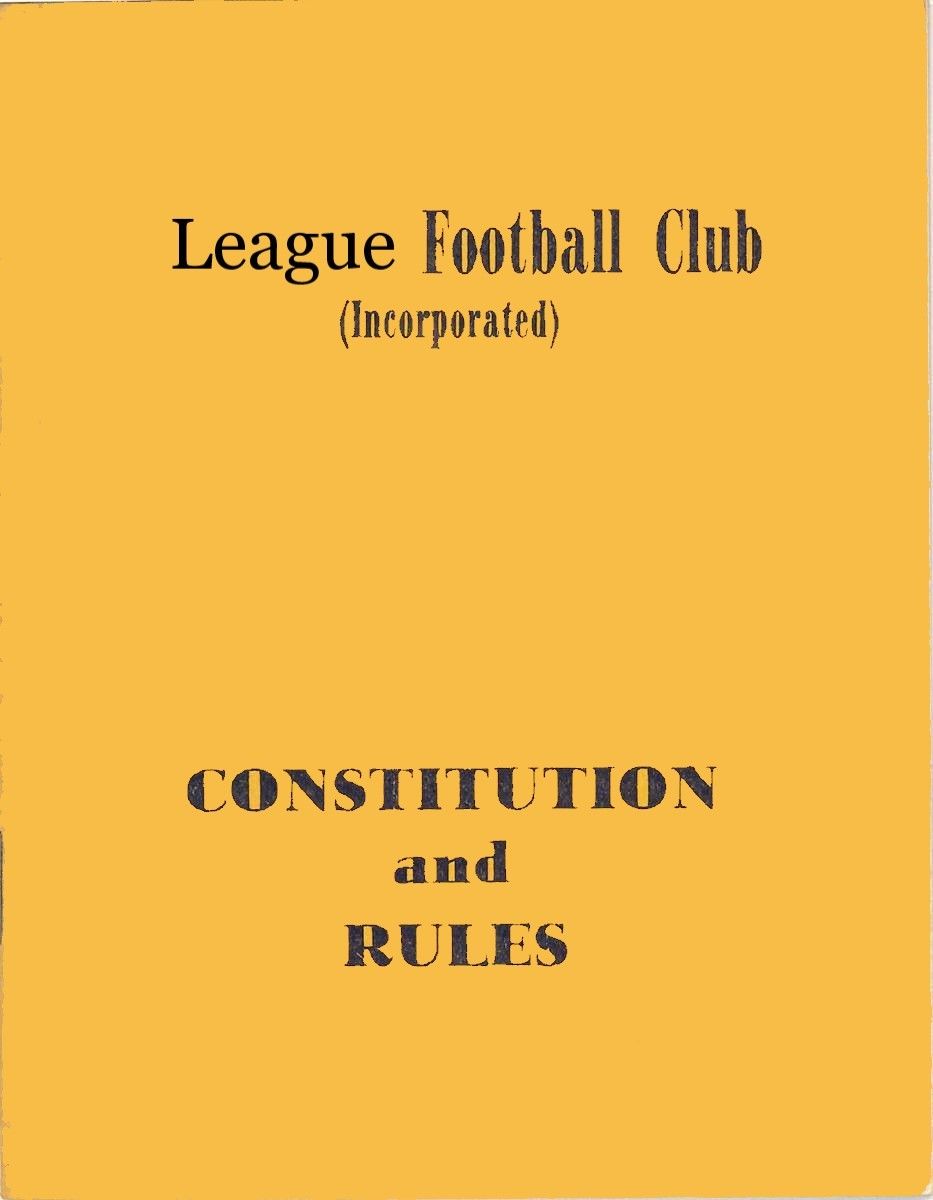Making Time work for you
We all only have 168 hours in every week...
Some people seem to do a lot and others, not so much. So what is it about some people and their capacity to get more done in a given amount of time?
Time management has many forms and sometimes the most efficient people don’t have a specific system , they are just innately skilled at prioritising and completing tasks. The old saying “If you want something done, give it to a busy person”, rings true mostly because busy people seem to schedule activities better and can adjust and fit in one more thing.
When running a club, pub or restaurant, time management (or interchangeably task management) is paramount to ‘getting things done’. Some people equally get stuff done and then look for what needs to be done next, whilst some people have a couple of tasks and make them fill all the available time.
I know that I am probably a fair example of the old adage – those who can’t do it, teach it – given that I used to teach Time Management as part of Certificate IV courses on Business and Frontline Management, yet often struggle to manage my priorities and get everything done when I want it done.
OK, so what tips and tricks have you got for us to improve our time/task management Ron? Let’s look at some simple suggestions to the slightly more complex ones.
Create a ‘To Do’ List
The simplest form of time/task management is to create a ‘To Do’ list for the things you need to get done. In its simplest form, you just write down the tasks that need doing - every day, or once per week or whatever frequency works for you. Some people put the most important or critical tasks at the top of the list and work their way down to the less important or critical ones.
As you complete each task, regardless of its importance, you strike it off the list and then renew the list, as per you preferred frequency. A ‘To Do’ list is a simple and effective way to work your way through the tasks and improve your efficiency. It is surprising how much more you can achieve when you have a focused task list to work to.
Default Diary
Another handy time management tool I picked up from Action Coach was a thing called a Default Diary. This is simply a template approach to key tasks that recur every week and need to be blocked out to ensure they are completed. An example is shown below –
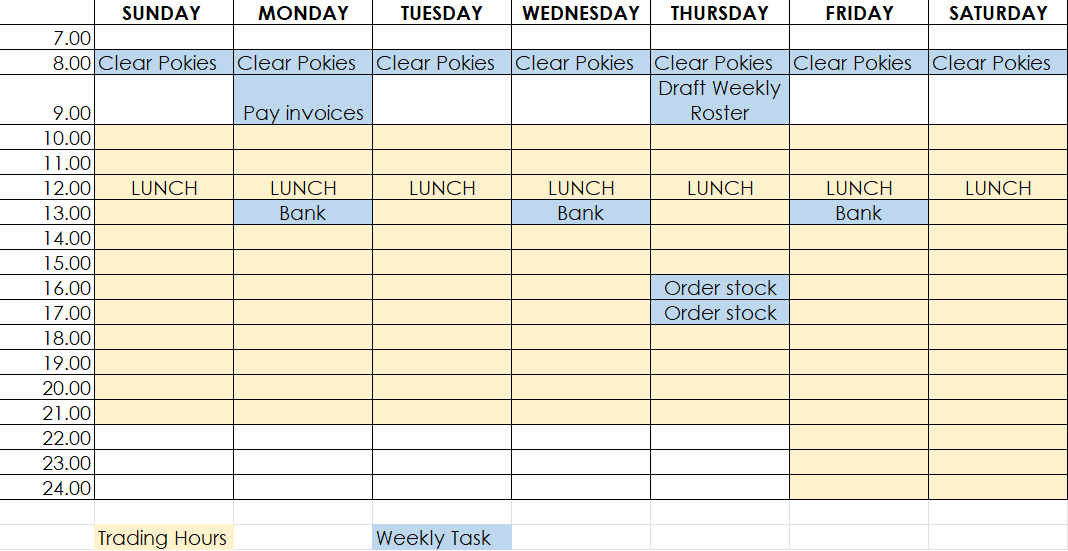
Time Management Diary
Time Management Diaries had their peak in the nineties when everyone was wanting to increase efficiency. Most Time Management diaries are modified To Do list approaches where you formalise the task needed to be done on a prioritising basis and then further ranking them in ‘sub’ priorities for example:
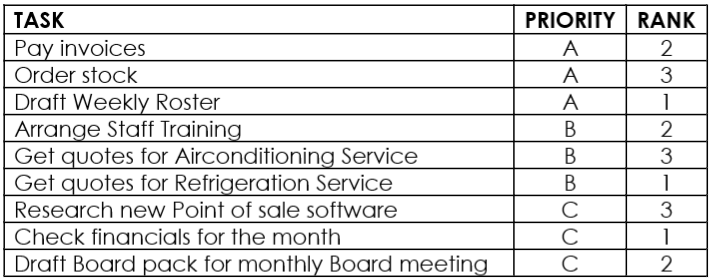
This then provides a more highly focussed list of tasks in the order of importance to address. And interestingly, using this system myself for a period some years ago, I found it was really good for getting all the low priority stuff done as often, the higher priority tasks were the least enjoyable or easy to achieve.
The system relied on you re-doing your list every day, at the end of the day, so you know what you had ahead of you for the next day. For many people this is a very effective way to manage their time and task completion and did indeed increase their efficiency.
Steven Covey – Important Urgent Matrix
Steven Covey, author of worldwide bestselling book The 7 Habits of Highly Effective People, is credited with popularising the Urgent vs. Important Matrix, for use in time management. As per the graphic below, Steven identified four elements of managing tasks – Things could be Urgent, Things could be Non-Urgent, Things could be Important and Things could be Not Important.
The combination of these four elements into the matrix below could assist in deciding which tasks needed to be done first.

The key to this approach is deciding what is Important and managing those tasks in a structured way so they never become Urgent. Covey maintained the most efficient way to work was to focus on the Important but Not Urgent Quadrant, which then gives you time to efficiently address the tasks that provide the maximum return on time invested. Without the terrible pressure of time, when things aare important and Urgent.
Tasks that are Not Important really need to be considered carefully as to whether or not they should actually be done.
President Eisenhower was credited with a similar approach and applied action philosophies to each quadrant –
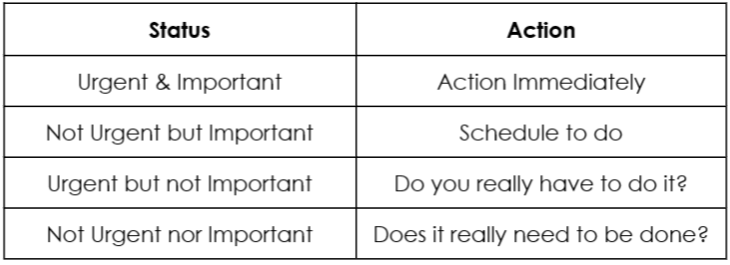
Which then looks like this -

This can save you a lot of time by consciously, and sometimes ruthlessly, getting rid of this tasks that really do not add any value to your day. The other trap to be conscious of is other people’s time frames. Other people who are really poor time managers can end up managing by deadline and put their urgency onto you, when they could have given you the task or request in a much more timely fashion.
Their urgency should not be your urgency! If you are asked to do a task for someone else, ask “When do you need that by?” That can be a simple way to manage your time, and offering you an option to say No, as it is not within your time capacity to complete the task when they need it.
Conversely, be respectful of other people’s time and ensure if you are asking someone to do something important for you, give them ample time to do it, so it does not become urgent.
Rolling 12 Month Calendar
One of my favourite strategies is to have a rolling 12 month Calendar of tasks that recur every year. This is particularly effective for managing marketing and promotions that tie in with annual calendar events like Easter, Mothers’ Day, Christmas etc. that way you know when a task/promotion needs to happen and give yourself ample time to plan and complete – 1 month, 3 months or more.
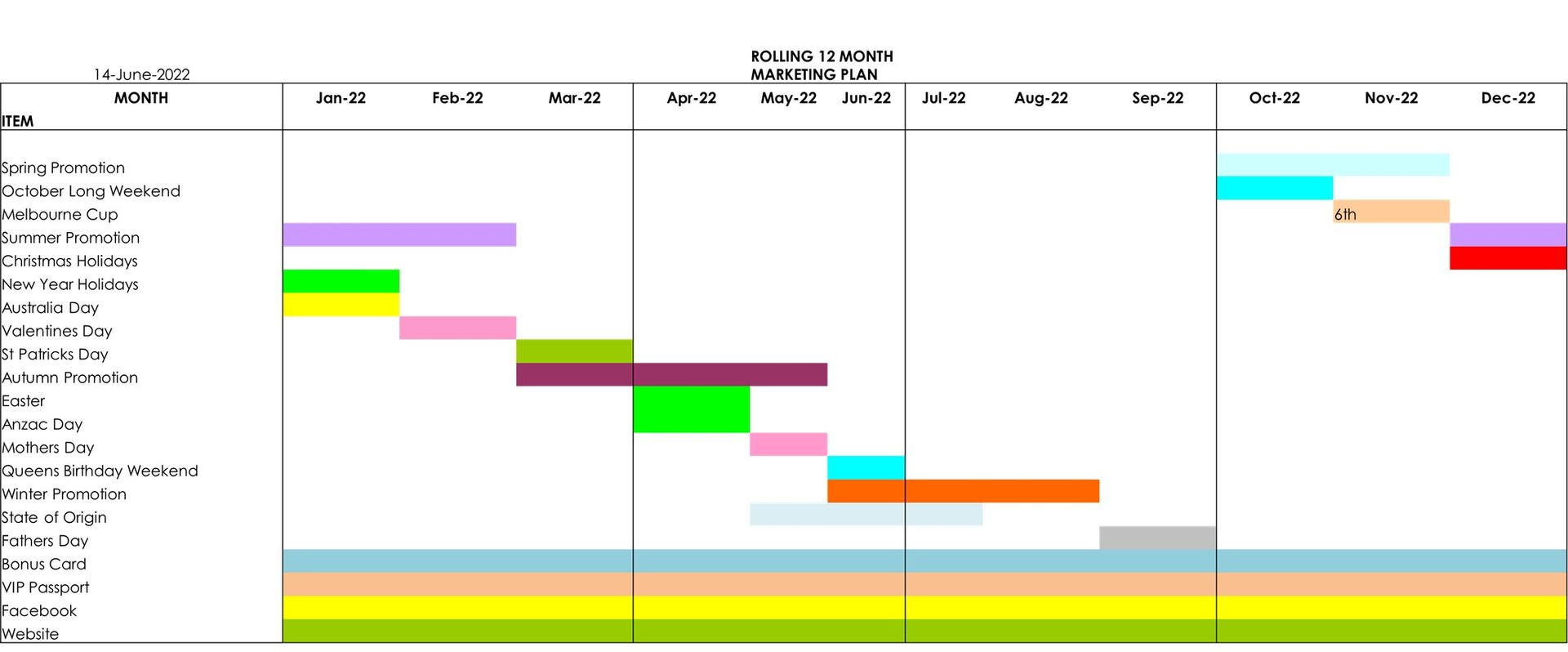
My last tip is a simple stress relief tip – set your completion deadline 3 days before something is actually due. This gives you some slippage space to ensure you complete on time. Once you commit to managing your time better, you will be surprised at how much more you actually get done in your day, week, month or year.
For more information contact Ron Browne, Managing Consultant info@extrapreneurservice.com.au or 0414 633 423





